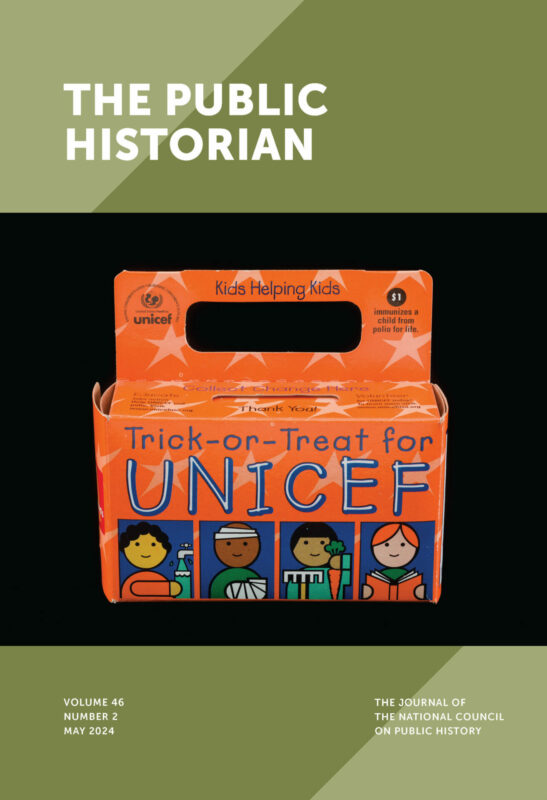Editor’s Corner: Philanthropy and public history
01 May 2024 – Sarah H. Case

UNICEF Trick or Treat box from “Giving in America” at the National Museum of American History. Photo credit: National Museum of American History
Editors’ Note: We publish the editor’s introduction to the May 2024 issue of The Public Historian here. The entire issue is available online to National Council on Public History members and to others with subscription access.
How can material objects help us better understand the complex, contested, and sometimes contradictory history of philanthropy? This question guides our special issue, “Material Culture as a Methodology for the History of Philanthropy,” guest-edited by Amanda Moniz. Moniz, the David M. Rubenstein Curator of Philanthropy at the Smithsonian’s National Museum of American History, has brought together a group of articles that explore how physical objects can help tell stories about charitable giving across place and time. Moniz and the contributing authors broaden the definition of “philanthropy” to go well beyond its association with large gifts from very wealthy or corporate donors to include small acts that express a “love of humanity,” employing the Greek definition of the word. By centering material culture, and by reframing archival products such as photographs and written records as objects, the authors in this special issue illuminate how physical remains of the past can deepen our understanding of the history of philanthropy. At the same time, the authors explore how charitable giving can mask or even create inequalities and cultural loss. This framework allows us as public historians to reach audiences by facilitating affective connections to remnants of the past.
The authors include Georgina Brewis, writing about teaching with objects; Sarah Weicksel, examining how late nineteenth-century silver mining on Nevada’s Comstock Lode was shaped by philanthropy; Hilary N. Green, analyzing photographs used to promote Black education in the post-Civil War era; Philippa Koch, considering the emotional weight of records that relinquished custody from mothers to orphan asylums; Jessica Lauren Nelson, exploring the legacy of two institutions for women in late colonial Oaxaca, Mexico; and Cheryl Ellenwood and Raymond Foxworth, emphasizing the misuse of Indigenous material culture by many philanthropic organizations. The collected articles offer an intriguing lens into better understanding and interpreting many kinds of philanthropic giving.
~Sarah H. Case, the editor of The Public Historian, earned her MA and Ph.D. in history at the University of California, Santa Barbara, where she is a continuing lecturer in history, teaching courses in public history, women’s history, and history of the South. She is the author of Leaders of Their Race: Educating Black and White Women in the New South (Illinois, 2017) and articles on women and education, reform, and commemoration.



